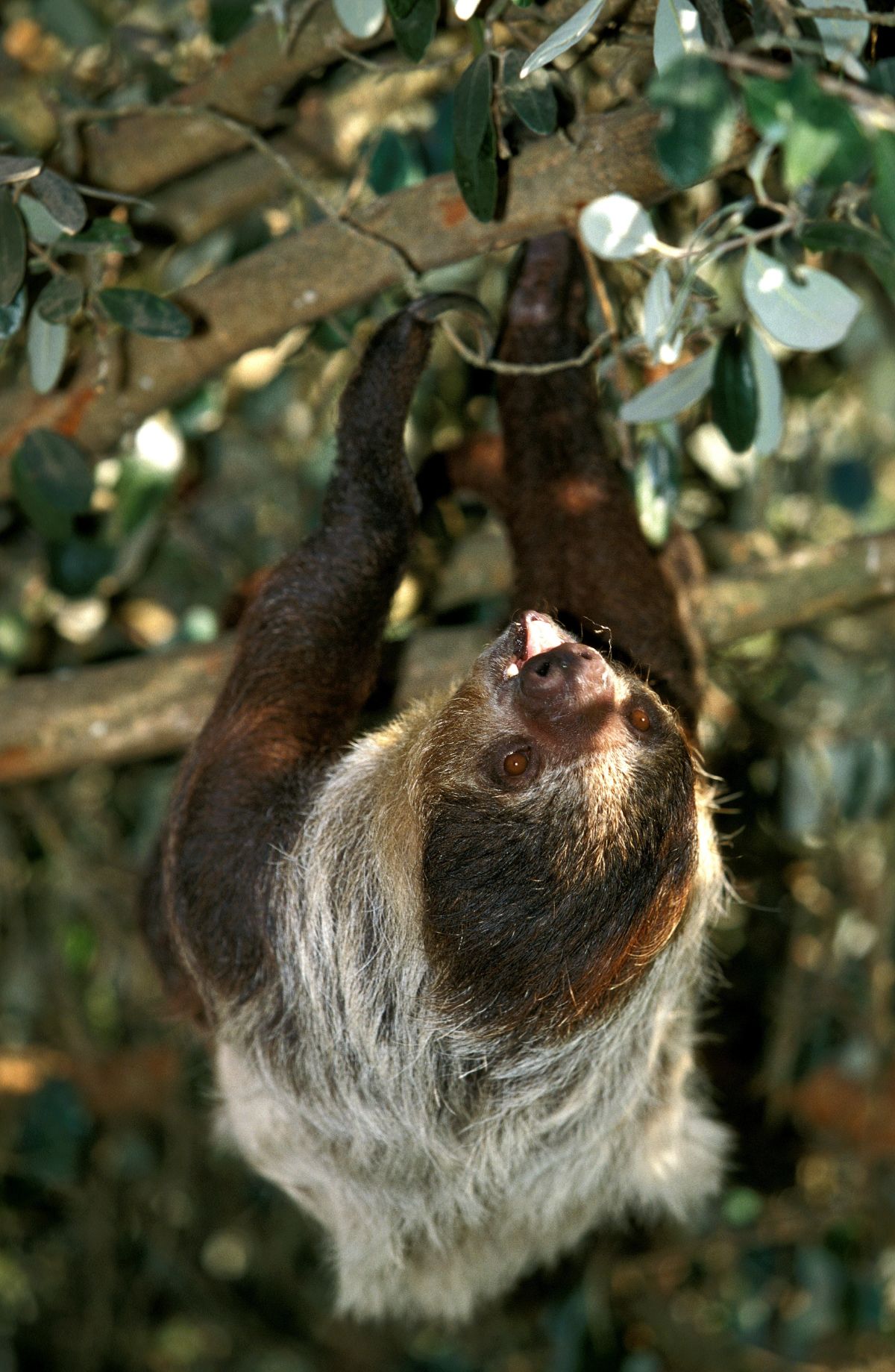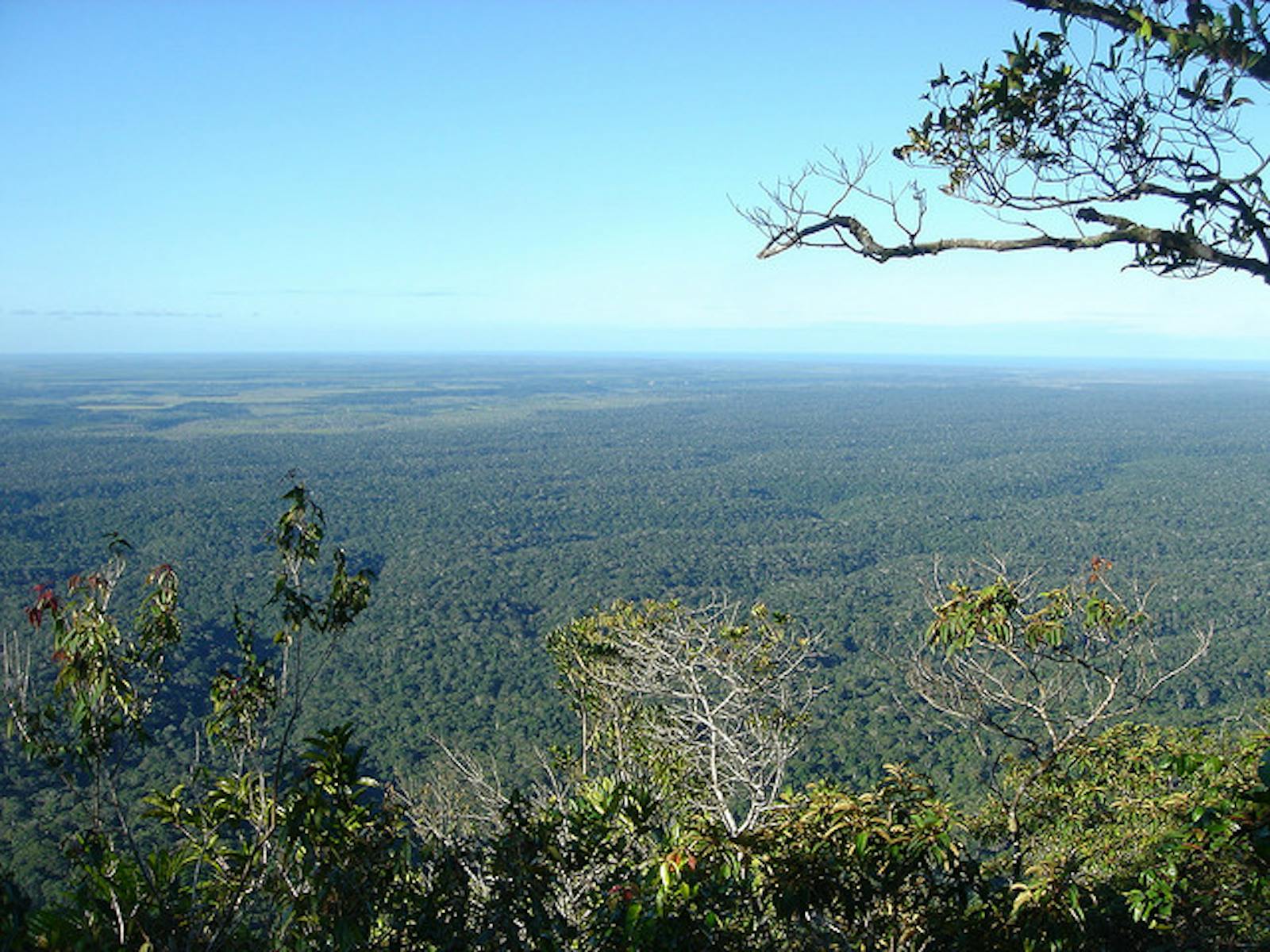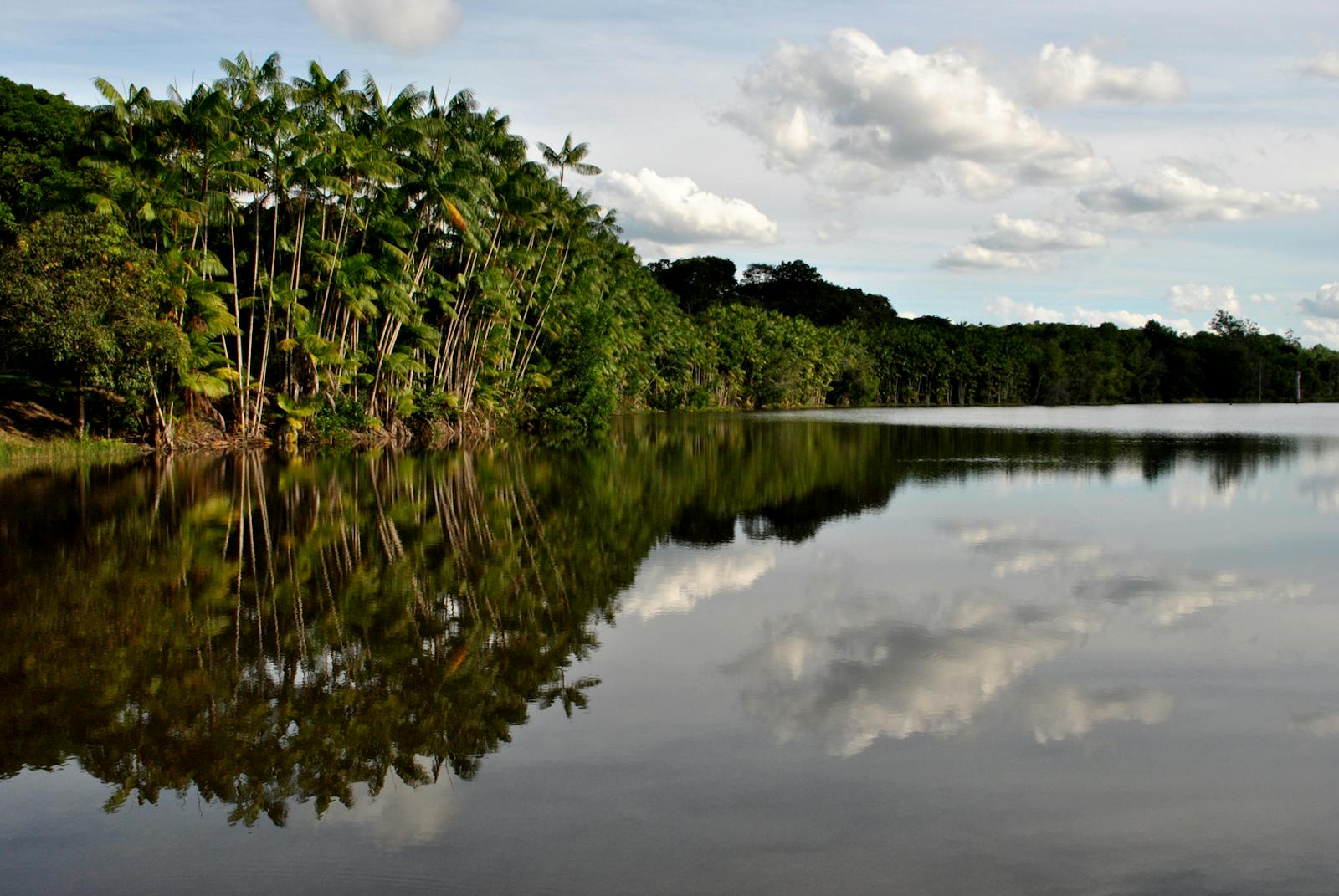Bahia Coastal Forests
The ecoregion’s land area is provided in units of 1,000 hectares. The conservation target is the Global Safety Net (GSN1) area for the given ecoregion. The protection level indicates the percentage of the GSN goal that is currently protected on a scale of 0-10. N/A means data is not available at this time.
Bioregion: Brazilian Atlantic Moist Forests (NT14)
Realm: Southern America
Ecoregion Size (1000 ha):
10,992
Ecoregion ID:
442
Conservation Target:
38%
Protection Level:
2
States: Brazil
The critically endangered Stresemann’s bristlefront, considered by some as the world’s rarest bird, occurs in the lowland moist forests of the Bahia coastal ecoregion. The namesake bristles on its forehead give this medium sized bird a distinctive look against its otherwise black and dark brown body. Stresemann’s bristlefronts’ musical song once filled the small canyons as they chased small frogs and insects along creek banks in the Bahian coastal forests.
This notoriously elusive bird went undetected for 50 years until its rediscovery in 1995, but threatened by continued habitat loss and fragmentation, fewer than 15 known individuals survive in Mata do Passarinho Reserve in Minas Gerais and Bahia.
Bahía Coastal Forests have been given highest priority for biodiversity conservation by local governments because they harbor an extraordinary number of endemic species of vascular plants, birds, primates, and butterflies. In addition, Bahía Coastal Forests appear to contain many primitive plant species and could have aided in primitive bamboo dispersal. Habitat loss due to agriculture is a risk to this unique ecoregion that must be promptly addressed.

The flagship species of the Bahia Coastal Forests ecoregion is the maned three-toed sloth.
Bahía Coastal Forest covers a 150-km wide strip along the Atlantic Coast of Bahía and Espirito Santo states in Brazil. The forest is limited westward by the ancient slopes of Serra da Mantiqueira Mountain Range, while the Itapicuru River limits the ecoregion northward. The climate is hot and humid with 1,200 to 1,800 mm of rainfall evenly distributed throughout the year, although a dry period, May through September, can occur in the south. The main types of vegetation are the Atlantic moist and semi-deciduous forests. Four layers of vegetation, with trees rising taller than 35 m, being predominant. The emergent and canopy layers are rich in plant life from the families of Legume, Brazil nuts, flowering plants, and evergreens.
Bahía Coastal Forests are noteworthy for biodiversity conservation because of the large number of endemic vascular plants, birds, primates, and butterflies. Plant species include three genera of legumes, four genera of bambusoid grasses, seven species of Inga—a small tropical tough leaved species—and the ecologically and economically important Paissava palm. Plant surveys have found that of the endemic vascular plant species to the Atlantic forest, 26 to 28 percent are endemic to the ecoregion.
Because there are many primitive plant species present, Bahía Coastal Forests are considered to be the dispersal centers for some primitive groups of bamboos. For several Amazonian species of plants and birds, Bahía Coastal Forests also represent the northernmost limit of their ranges in the Atlantic forests of Brazil. This region has been recognized by Birdlife International as part of the greater Atlantic forest lowlands Endemic Bird Area, with 16 species partially restricted to the coastal Bahía region.
The forests of coastal Bahía are considered an endangered habitat because they have been reduced by 95%. In southern Bahía, only about 0.4% of the original forest remains. At present, forest conversion into pasture is rapidly occurring, stimulated by the economic crash of cocoa plantations. Remaining natural vegetation is represented by approximately 9,532 km2 of moist, semi-deciduous, and associated restinga forests. The largest blocks of habitat are protected by Sooretama Biological Reserve and by Linhares Forest Reserve. Natural protected areas cover only 0.9% of the ecoregion both in lowland moist and semi-deciduous forests.
Agriculture is a new economic source that could represent a large threat to the ecosystem. There are 5,000 km2 of Atlantic forest associated with cocoa plantations that may be converted to pasture. Such activities would contribute to habitat loss and forest fragmentation with all deleterious impacts associated with those processes.
Therefore, the priority conservation actions for the next decade are to: 1) promote and invest in forest-cover recovery programs; 2) create forest corridors through organizations of Private Reserves of Natural Heritage (RPPN); and 3) focus research effort on and promote responsible ecotourism of Stresemann’s bristlefront and other species near the brink of extinction.
Citations
1. da Silva, Jose Maria C. 2018. Bahia Coastal Forests. https://www.worldwildlife.org/ecoregions/nt0103 Accessed July 8, 2018
2. Stattersfield, A.J., M.J. Crosby, A.J. Long, and D.C. Wege. 1998. Endemic bird areas of the world: priorities for conservation. BirdLife International, Cambridge, UK
3. Fonseca, G.A.B., A.B. Rylands, C.M.R. Costa, R.B. Machodo, and Y.R.L. Leite, editors, 1994. Livro vermelho dos mamíferos brasileiros ameaçados de extinção. Fundação Biodiversitas, Belo Horizonte.
4. BirdLife International 2018. Merulaxis stresemanni. The IUCN Red List of Threatened Species 2018: e.T22703477A130827797. Accessed June 28, 2019.




